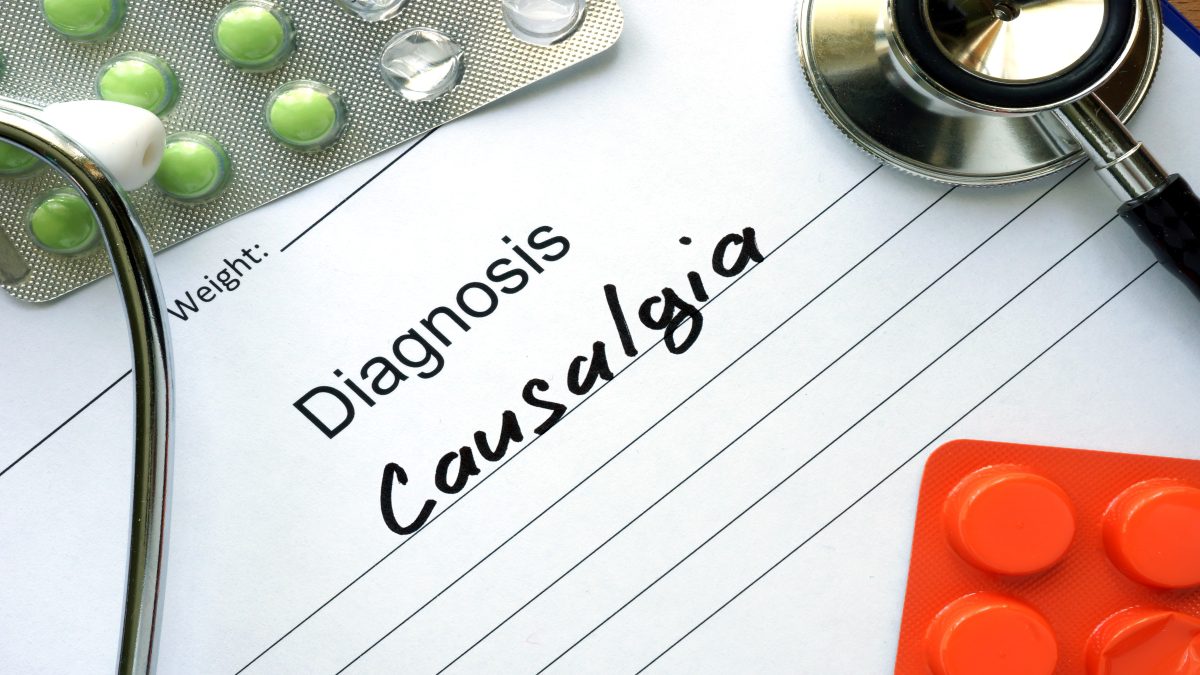What do CRPS and RSD mean?
Complex regional pain syndrome (CRPS) is also known as reflex sympathetic dystrophy syndrome (RSDS). It is a chronic pain disorder that is characterized by a high level of nerve messages being sent to the affected area of the body, even if only a mild injury has occurred.
Most medical experts believe the condition is caused by a malfunction in the central nervous system or the peripheral nervous system. The central nervous system includes the brain and the spinal cord. The peripheral nervous system includes all parts of the nervous system outside of the spinal cord and brain.
Complex regional pain syndrome symptoms
Symptoms of complex regional pain syndrome usually include:
- Unrelenting pain that is severe and continually increases as time goes on
- The pain of complex regional pain syndrome is often described as intense burning
- Stiffness and swelling in affected joints, with decreased ability to move the affected area
- Changes in temperature of the skin in the affected area
- Either rapid nail and hair growth or the absence of nail and hair growth in the affected area
- Changes in the skin color of the affected arm or leg
- Changes in skin texture of the area—the skin is often tight and shiny
- Increased perspiration in the affected area
Other than the continuous and extreme pain that continues to progress in severity, complex regional pain syndrome symptoms can vary in length and severity. When the disorder develops following an injury, the pain may seem more severe than is expected or disproportionate to the type of injury sustained. If a finger or toe is injured, pain may spread and eventually affect the entire leg or arm. Sometimes, complex regional pain syndrome can spread to the opposite side of the body from where the injury occurred.
Complex regional pain syndrome causes
Complex regional pain syndrome can occur in children or adults, but it happens most often between the ages of 20 and 35. More women are affected by CRPS than men, and the symptoms may increase in severity during periods of increased stress.
Most experts believe complex regional pain syndrome is not the result of one dysfunction but that it develops because of several factors that cause similar symptoms. Women are more likely to develop the condition than men are, and it is most common in people who are over the age of 20 but less than 60 years old.
Some research seems to suggest that the pain receptors in the affected area begin to respond to certain chemicals in the body called catecholamines. In cases of complex regional pain syndrome that develop following an injury, the disorder may result due to the body’s immune response, which triggers inflammation. This is why some researchers believe that complex regional pain syndrome is caused by a disruption in the body’s healing process.
Anyone can develop complex regional pain syndrome, but it is seen more often in people who have had an injury to nerves. But not everyone who has even severe nerve damage develops complex regional pain syndrome. Injuries to the musculoskeletal system can also cause the disorder.
Types of regional pain syndrome
There are two types of complex regional pain syndrome (CRSP):
- Complex regional pain syndrome Type 1: This is defined as occurring in a limb following an injury. This type account for the vast majority (over 90%) of CRPS cases. It often occurs following minor musculoskeletal injuries that do not cause apparent nerve damage.
- Complex regional pain syndrome Type 2: This type of CRPS occurs following direct nerve damage. Nerve damage can occur, for example:
- When a limb is traumatically and severely injured in an accident
- During surgery
- During a medical procedure, such as a blood donation, a laboratory procedure, or an injection of medication
No matter what causes the symptoms of complex regional pain syndrome, it can be an extremely devastating and disabling condition.
Complications
- Contracture (muscle tightening). Muscle tightening may result in a condition where your foot and toes or your hand and fingers contract into a fixed position.
- Atrophy (tissue wasting). If you escape or experience troubles moving your arm or leg due to pain or stiffness, your skin, bones and muscles may lose strength and deteriorate over time.
Prevention
- Vitamin C taking after a wrist fracture. Taking high doses of vitamin C after a wrist fracture has been shown to decrease the risk of complex regional pain syndrome development compared with not taking Vitamin C.
- Mobilization soon after a stroke. Getting out of bed and moving soon after a stroke may decrease your risk of complex regional pain syndrome developing.
Click Here to read about Treatment.
















Leave a Reply
You must be logged in to post a comment.